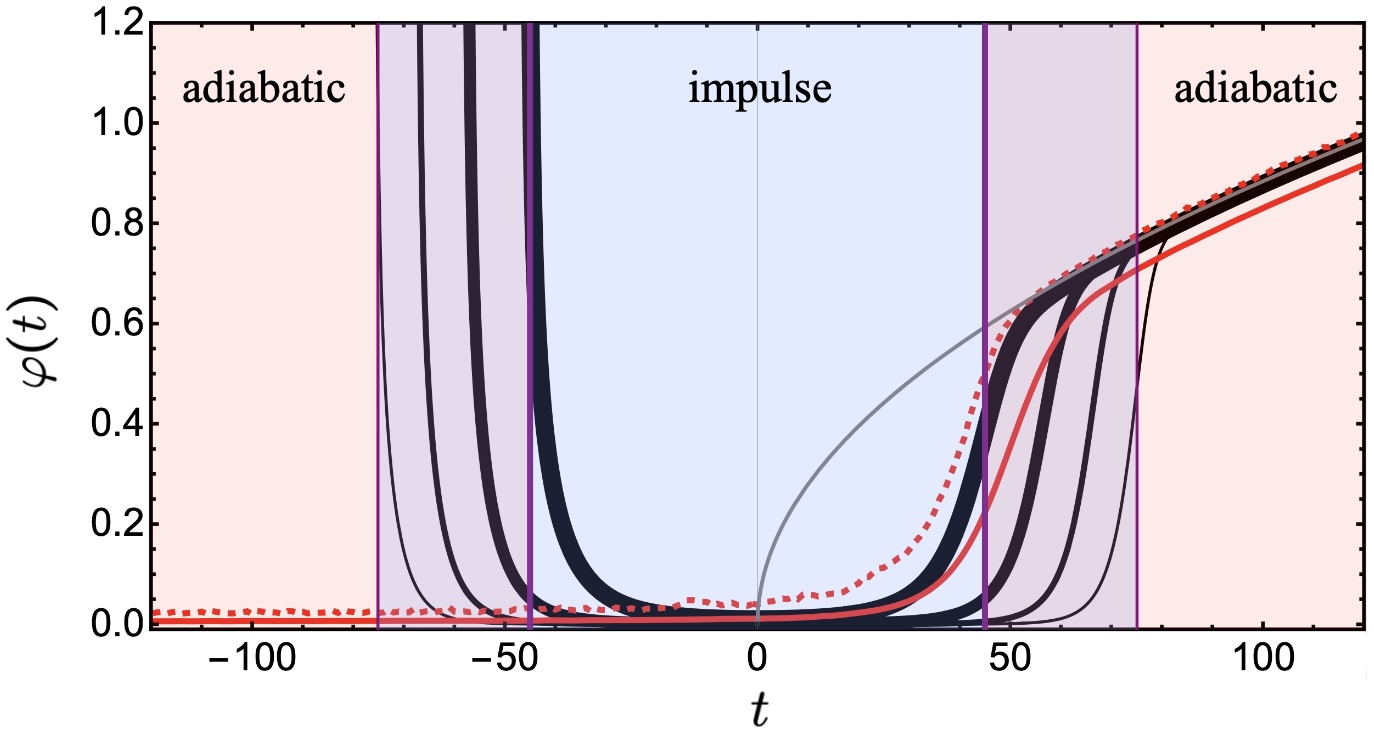Latest Preprints
Fumika Suzuki, Rajesh K. Malla, Nikolai A. Sinitsyn,
Competing Bosonic Reactions: Insight from Exactly Solvable Time-Dependent Models,
arXiv:2504.13027 (2025)
Fumika Suzuki, and W. H. Zurek,
Dynamics of the order parameter in symmetry breaking phase transitions,
arXiv:2412.15568 (2024)
*Answers to some common questions:
We occasionally receive questions referring to theorems derived for equilibrium systems. However, the Kibble-Zurek mechanism addresses "non-equilibrium" dynamics during critical quenches. Please be mindful of the assumptions under which those mathematical theorems were proved.

Selected Publications (corresponding author)
Fumika Suzuki, and W. H. Zurek,
Topological defect formation in a phase transition with tunable order,
Phys. Rev. Lett. 132, 241601 (2024)
APS Physics Magazine
LANL News
Supplementary Movie
Poster Presentation
The Kibble-Zurek mechanism (KZM) describes the non-equilibrium dynamics and topological defect formation in systems undergoing second-order phase transitions. KZM has found applications in fields such as cosmology and condensed matter physics. KZM is generally applicable only to second-order phase transitions. However, here we extend the applicability of KZM to first-order phase transitions by combining it with nucleation theory.
*Answers to some common questions:
- We occasionally receive questions referring to theorems derived for equilibrium systems. However, the Kibble-Zurek mechanism addresses "non-equilibrium" dynamics during critical quenches. Please be mindful of the assumptions under which those mathematical theorems were proved.
- Q: Can I use the potential of the form V = φ6 - ε φ2 - c φ4 for a weakly first-order phase transition?
A: Yes, you can. It gives results (of course) very similar to those presented in the paper.

Fumika Suzuki, S. A. Shah, Diego A. R. Dalvit, Markus Arndt,
Requirements for probing chiral Casimir-Polder forces in a molecular Talbot-Lau interferometer,
Phys. Rev. Research 6, 023145 (2024)

Fumika Suzuki, and W. G. Unruh,
Numerical quantum clock simulations for measuring tunneling times,
Phys. Rev. A 107, 042216 (2023)

Fumika Suzuki, Mikhail Lemeshko, Wojciech H. Zurek, Roman V. Krems,
Anderson Localization of Composite Particles,
Phys. Rev. Lett. 127, 160602 (2021)

Publications, Preprints with Students
Bhavay Tyagi, Fumika Suzuki, Vladimir A. Chernyak, Nikolai A. Sinitsyn,
Asymmetry Amplification by a Nonadiabatic Passage through a Critical Point,
Phys. Rev. A 111, 032205 (2025)
Vijay Ganesh Sadhasivam, Fumika Suzuki, Bin Yan, Nikolai A. Sinitsyn,
Parametric tuning of dynamical phase transitions in ultracold reactions,
Nat. Commun. 15, 10246 (2024)
Nikolai A. Sinitsyn, Vijay Ganesh Sadhasivam, Fumika Suzuki,
Nonadiabatic transitions during a passage near a critical point,
J. Chem. Phys. 160, 074104 (2024)
| My research articles: arXiv | ORCID | Google Scholar |